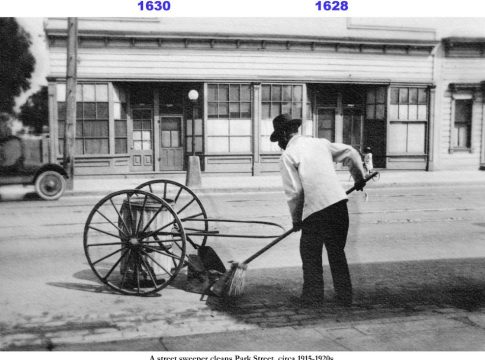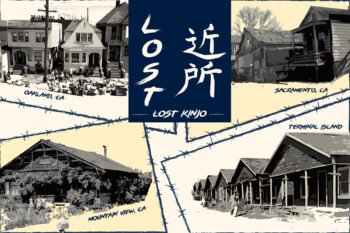By Jessica Xiao, AsAmNews Staff Writer
Kuya is a superhero who fights crime and protects the fictional city of Fogtown using a very delicious weapon—lumpia. Fogtown is based on creator Patricio Ginelsa’s hometown of Daly City, CA, which is also known as Little Manila.
Marlon Ramos, aka Bayani or “hero” in Tagalog, is a superhero, created by Mark Teodosio in honor of his cousin’s memory, in the slums of Tondo, Manila. His powers originate with Lapu-Lapu, a real Indigenous chief who defeated Spanish forces led by Portuguese explorer Ferdinand Magellan in 1521.
Two very different superheroes who both invoke a deep sense of pride amongst Filipino American fans—and have penetrated a much wider audience. It was natural for the two creators to share exhibit space at New York Comic Con and other events, to share Filipino culture.

Lumpia With a Vengeance
LATEST STORIES
Nine years in the making, Lumpia with a Vengeance—informally, Lumpia 2, won the Audience Award for Best Narrative Feature at the Hawaiian International Film Festival, the very first film festival at which it screened. It’s in eighteen theaters and counting across the United States, and now, it’s expanded to include a crowdfunded comic book series—affectionately known as part of the “Deep Fried Universe”—based on the film.
The first Lumpia movie was a homemade film Ginelsa made with friends and neighbors in Daly City after graduating from film school at the University of Southern California; it garnered a cult following.
“Every creator dreams of being on the big screen—from comic book to movie, we went the other way around, from movie to comic book. We joked about collaborating, everything started with a joke, but you never know, we could have a movie in the future with Bayani,” said Ginelsa.
The joke that started Lumpia came from the creator’s brother, who was inspired by the 1992 film El Mariachi produced by Robert Rodriguez, featuring a mariachi who used his guitar as a weapon.
“[El Mariachi] was a low-budget film, but for its time, very cool. My brother joked we should have a Filipino version. That was twenty years ago,” said Ginelsa.

The Realest Bayani
The Realest Bayani, a comic book series that started in 2018, and was “rebirthed” in 2020, was also inspired by family—but has a more tragic origin story.
“It was created as a tribute for my cousin Marlon Ramos, who died of a drug overdose in 2013. I was in my early thirties when I found him in my mother’s basement. Bayani is his resurrection as a Filipino superhero,” said the creator Mark Teodosio.
For Teodosio, creating Bayani was a way of coping with loss: “This is my way of representing him the way he represented me. It’s a powerful translation of my pain. Guilt, too, because I used to be super judgmental of his habits. I thought, how can I provide healing for that event—for that loss—and [creating The Realest Bayani] has been creative therapy.”
It was also a way to transform the memory and legacy of his cousin Marlon: “There’s no saying whether it was suicide or an accidental overdose. The detective found sleeping pills. He had an addiction to ‘shabu,’ a form of crystal meth popularized in the Philippines and brought to California and back to New York. It’s part of his story. The way I wrote Bayani was to serve as an inspiration tool for his son—so that he can read about his father as a superhero.”
The series weaves elements of the real-life Marlon with the fictional Marlon, aka Bayani.
“Marlon was in a Filipino gang in California, a form of the Bloods. Bayani is in the slum of the slums—garbage flows through the river, and people are underserved. I wanted people to get the highlight of an urban environment in a tropical paradise, like, what is the hood like in the Philippines?”
It has also been a way for Teodosio to connect with his own heritage and share Filipino history with a larger audience. “After my cousin passed away, I was inspired to learn more about Filipinos and teach more about the culture. I didn’t even know what Bayani meant. It was my Puerto Rican friend who said I should make a comic book on Bayani. I got schooled and I decided no one else should school me.”
He does most of his research online but has also visited the Philippines, most recently in 2013 to bury his cousin. “I did a lot of my research online through Instagram sources and myself, looking up my own history. A lot of the current political climate in the Phillippines—Duterte—influences the characters.”
Love of Comics, Love of Culture
Both creators have day jobs; spreading the love of comics and their pride in their culture is a passion project.
“Lumpia reflects my love for comic books and my love for my culture, melding the two together,” said Ginelsa, who works at his alma mater, USC, and runs an experiential learning center at the business school.
A recent review of the film brought him to tears because it so accurately captured the theme of the movie: crab mentality and togetherness. “This is a movie we need right now after being in quarantine for so long. It’s not only about my culture, but about togetherness. I want people to be entertained—it’s a wacky comedy, but also has the theme of unity.”
Teodosio, who lives in Staten Island, was born in Sunset Park, Brooklyn, and works as a port officer. He is also a hip-hop musician whose influences come from growing up in New York, thug rap, and from reading manga and comic books and being good at school, traits he associates with his Filipino upbringing. He started coming to Comic Con in 2011 and was inspired. “You can only do so much in a rap song. Comic books are the most long-lasting impression that you can make on the Earth – it’s a form of literature,” said Teodosio.
Both creators also see the work as much larger than themselves—and as catalysts for more collaboration and space for Filipino American creators. While growing up, they could only point to one well-known Filipino American comic book artist as inspiration: Whilce Portacio, known for his work on titles like X-Men (he co-created the character Bishop), The Punisher, Iron Man, and more.
“You don’t see [Portacio], you see their art, but his name sounded so Filipino. He was drawing all the X-Men comics we were reading at the time. In one panel, we saw a character wear a bomber jacket with the Filipino flag on it—it was his way of winking at people, yes, I am Filipino,” said Ginelsa.
Today Gilnelsa is working with his childhood heroes and new Filipino American creators. Wilce Portacio designed one of the Lumpia With a Vengeance comic book covers. Another inspiration, Dante Basco, “one of the few Filipino American actors you saw on screen,” is an actor Ginelsa has worked with and directed in other projects. Dante Basco’s brother Darion Basco is in the Lumpia 2 film.
Both creators are supported by their fans. “Our supporters willed [the comic book series] into existence,” Ginelsa said, about the crowdfunding campaign that made the Lumpia comic book series possible. Teodosio said he’s received a lot of love from the Filipino American community. “[The Filipino American community is] super prideful. They say, ‘keep doing it, keep doing it.’ They loved it.”

Learn more about where to screen Lumpia With a Vengeance, currently in select theaters, here.
Issues of The Realest Bayani can be found here.
AsAmNews is published by the non-profit, Asian American Media Inc. Follow us on Facebook, X, Instagram, TikTok and YouTube. Please consider making a tax-deductible donation to support our efforts to produce diverse content about the AAPI communities. We are supported in part by funding provided by the State of California, administered by the California State Library in partnership with the California Department of Social Services and the California Commission on Asian and Pacific Islander American Affairs as part of the Stop the Hate program. To report a hate incident or hate crime and get support, go to CA vs Hate.







